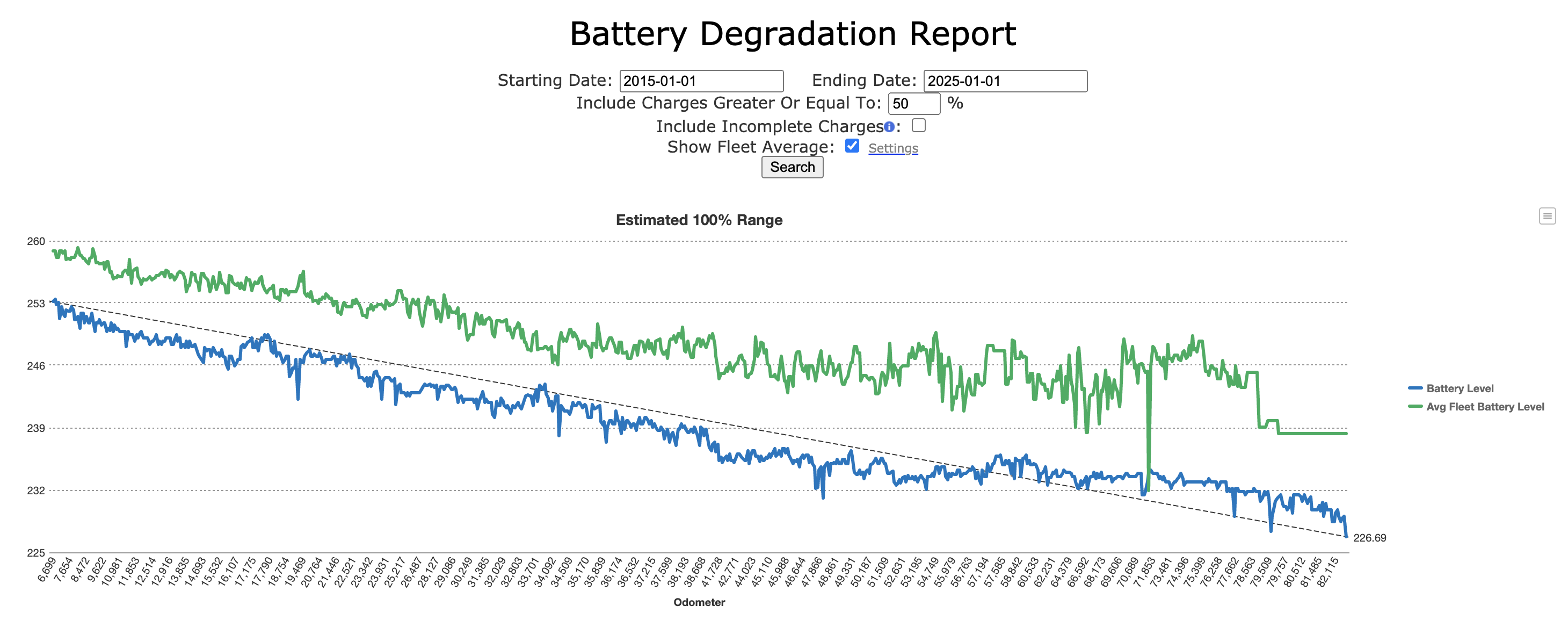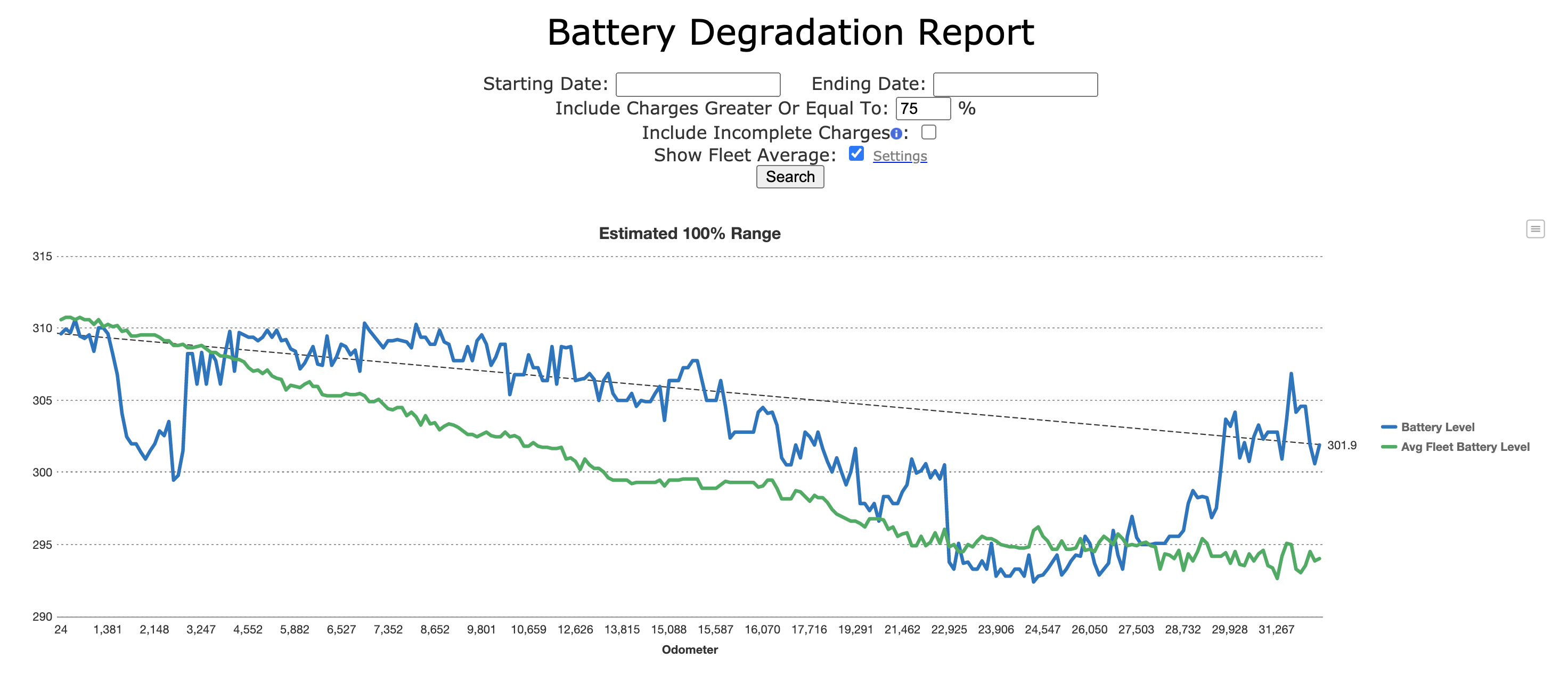I've been tracking battery range degradation religiouslyon my two Teslas -- a four-year-old Model X and a two-year-old Model 3, and differences in battery performance versus the fleet average are truly remarkable.
My Model X 90D, delivered in June, 2016, started at 264 miles of range, but is now down to 227 miles -- a degradation of 14% over 82,671 miles. Tracking this against the fleet average on TeslaFi, you can see that this car has always run well below the fleet average, despite the fact that I've always "babied" the battery -- rarely charging to 100%, minimal supercharging, etc. In the chart below, my Model X is the blue line, and the fleet average is the green line:

Compare that disappointing performance on my Model X to the experience on my Model 3, which, except for two brief periods (roughly corresponding to winter, interestingly) has been consistently well above the fleet average. After 33,200 miles, my Model 3's battery has only degraded by 3% -- well above the fleet average. Again, very similar careful battery management. My Model 3 is the blue line, and the fleet average is the green line:

The differences are quite remarkable, especially since the things I would most often associate with variations in battery degradation -- climate, driving patterns, and charging management -- were quite similar between the two vehicles.
With my new Model Y due to arrive in a few weeks (replacing the Model X), I can't help but wonder whether I'll be lucky like I was with my Model 3, or unlucky as I have been with the Model X.
My Model X 90D, delivered in June, 2016, started at 264 miles of range, but is now down to 227 miles -- a degradation of 14% over 82,671 miles. Tracking this against the fleet average on TeslaFi, you can see that this car has always run well below the fleet average, despite the fact that I've always "babied" the battery -- rarely charging to 100%, minimal supercharging, etc. In the chart below, my Model X is the blue line, and the fleet average is the green line:

Compare that disappointing performance on my Model X to the experience on my Model 3, which, except for two brief periods (roughly corresponding to winter, interestingly) has been consistently well above the fleet average. After 33,200 miles, my Model 3's battery has only degraded by 3% -- well above the fleet average. Again, very similar careful battery management. My Model 3 is the blue line, and the fleet average is the green line:

The differences are quite remarkable, especially since the things I would most often associate with variations in battery degradation -- climate, driving patterns, and charging management -- were quite similar between the two vehicles.
With my new Model Y due to arrive in a few weeks (replacing the Model X), I can't help but wonder whether I'll be lucky like I was with my Model 3, or unlucky as I have been with the Model X.


